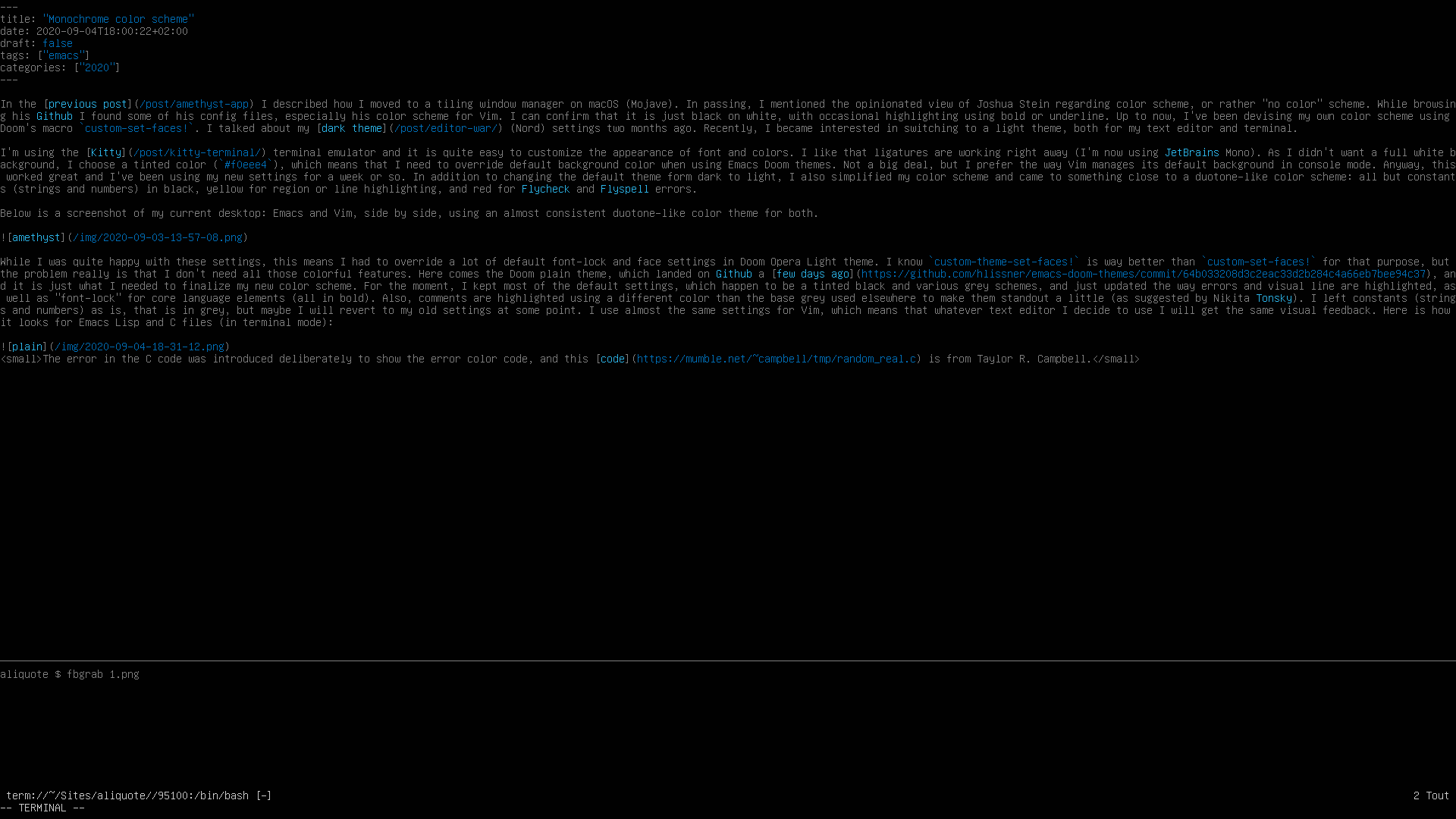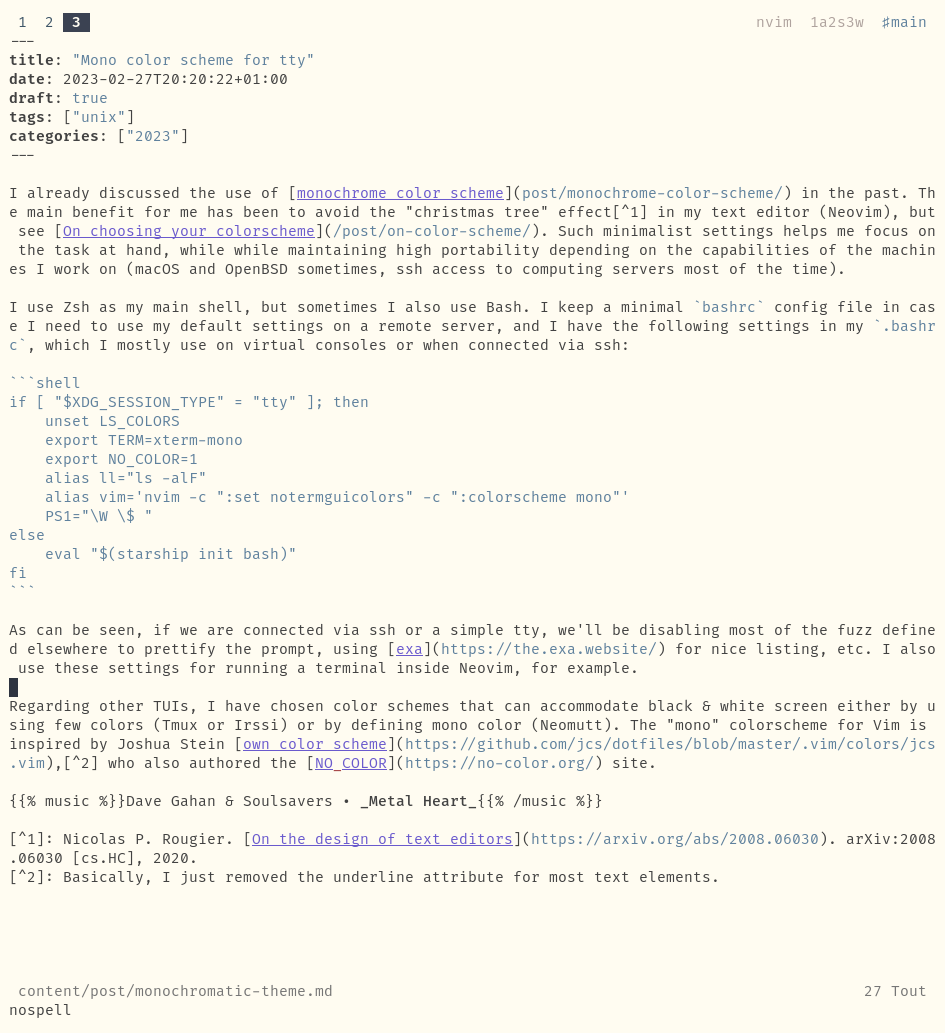Mono color scheme for tty
I already discussed the use of monochrome color scheme in the past. The main benefit for me has been to avoid the “christmas tree” effect1 in my text editor (Neovim), but see On choosing your colorscheme. Such minimalist settings helps me focus on the task at hand, while while maintaining high portability depending on the capabilities of the machines I work on (macOS and OpenBSD sometimes, ssh access to computing servers most of the time).
See also Color Conundrum by Akshay who made a good point here: “Imagine highlighting an entire book because all of it is important.”
I use Zsh as my main shell, but sometimes I also use Bash. I keep a minimal bashrc config file in case I need to use my default settings on a remote server, and I have the following settings in my .bashrc, which I mostly use on virtual consoles or when connected via ssh:
if [ "$XDG_SESSION_TYPE" = "tty" ]; then
unset LS_COLORS
export TERM=xterm-mono
export NO_COLOR=1
alias ll="ls -alF"
alias vim='nvim -c ":set notermguicolors" -c ":colorscheme mono"'
PS1="\W \$ "
else
eval "$(starship init bash)"
fi
As can be seen, if we are connected via ssh or a simple tty, we’ll be disabling most of the fuzz defined elsewhere to prettify the prompt, using exa for nice listing, etc. I also use these settings for running a terminal inside Neovim, for example.
Regarding other TUIs, I have chosen color schemes that can accommodate black & white screen either by using few colors (Tmux or Irssi) or by defining mono color (Neomutt). The “mono” colorscheme for Vim is inspired by Joshua Stein own color scheme,2 who also authored the NO_COLOR site. Here is my default theme (left) and the mono theme (right) when editing this post:
Overall I quite like working on a virtual console, especially since I can still listen to music running on Cmus in a regular X session, so here is a screenshot of the same editing session on a virtual console:

♪ Dave Gahan & Soulsavers • Metal Heart
Nicolas P. Rougier. On the design of text editors. arXiv:2008.06030 [cs.HC], 2020. ↩︎
Basically, I just removed the underline attribute for most text elements. ↩︎

